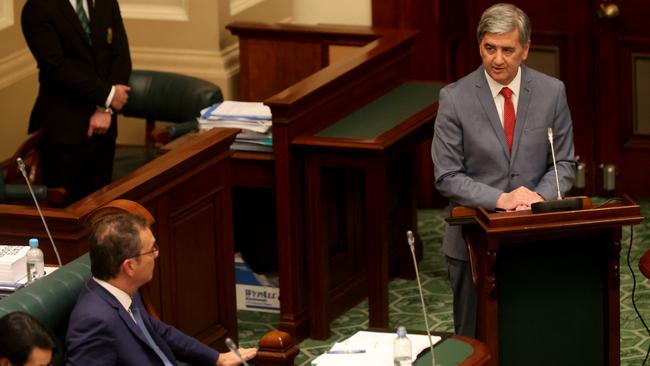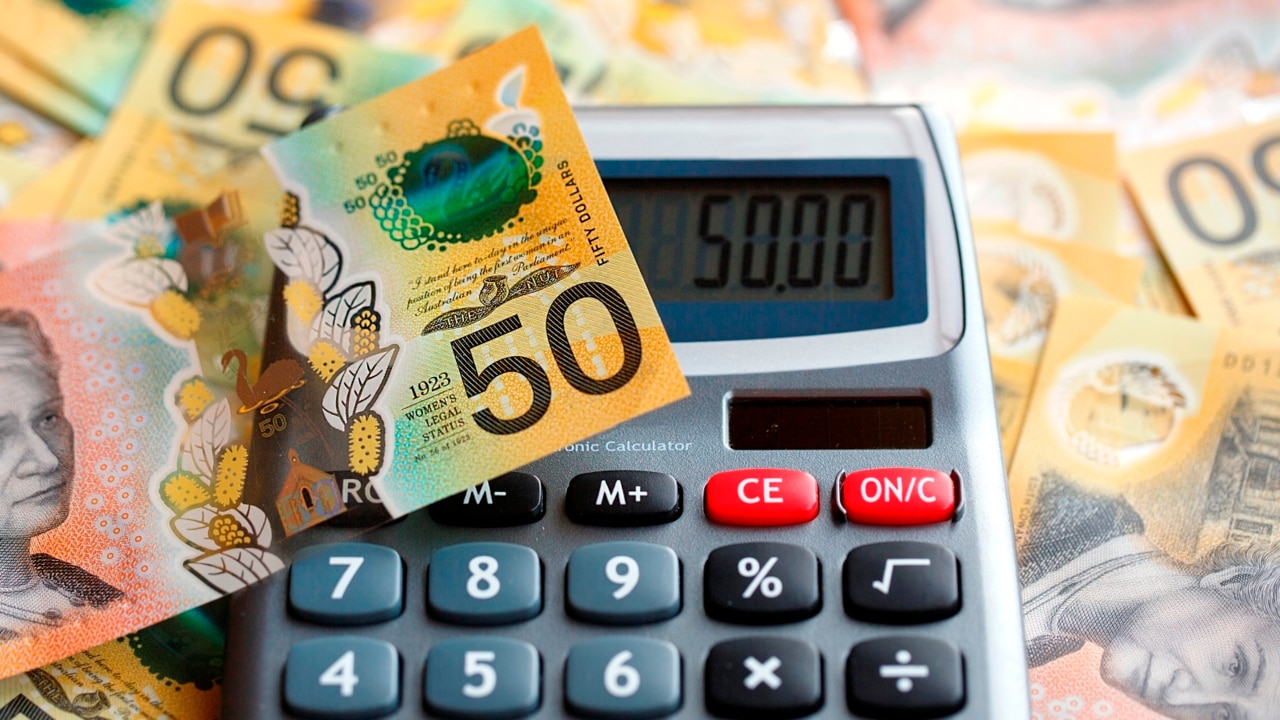Why Treasurer Rob Lucas has gone into ‘eye-watering debt’ in the 2020 State Budget
SA’s debt will increase to more than $33 billion as a usually notoriously frugal Treasurer spends his way out of the COVID wreck.

SA Business
Don't miss out on the headlines from SA Business. Followed categories will be added to My News.
Historically low interest rates have delivered Treasurer Rob Lucas a vital free kick, meaning he can both massively increase the State Government’s debt load to an epic $33.17bn by the end of the forward estimates while paying less interest.
Action by central banks across the globe to push interest rates close to zero means the State Government can borrow debt over the long term, for rates around 1.3 per cent.
This means that, after paying down higher-cost debt and replacing it with cheaper rates, the government will now pay about $447m less in interest out to 2022-23.
The government’s total debt level will almost double however, hitting the $33.17bn figure by 2023-24, and net debt to revenue – debt versus money coming in – will grow from 111.3 per cent this financial year to 133.7 per cent.
“Whilst these numbers are eye-watering for any Treasurer they are mouth-watering for workers and businesses as they are the means of saving thousands of jobs and businesses in South Australia,’’ Mr Lucas said in his Budget speech.
“One of the reasons why the Reserve Bank has urged governments to borrow more to fund stimulus and infrastructure projects is that interest rates are at historically low levels and the Reserve Bank has pledged to take action to maintain that position.’’
Mr Lucas said the government had borrowed $6.65bn at an average rate of 1.3 per cent over the past 10 months, and rates locked in this year have varied from 0.69 per cent for two year bonds in April, to 2.29 per cent for 20-year bonds in September. “As a result even though debt will increase significantly, estimated interest costs for general government sector debt over the next three years will be $447m less than the estimate in last year’s Budget,’’ Mr Lucas said.
This year’s State Budget is a massive turnaround from last year, when the government delivered a budget surplus of $289 million and forecast modest surpluses over the forward estimates.
That has swung to an actual deficit for the past financial year of $1.49bn, which will increase to $2.59bn this year and $1.42bn. On the upside, and in keeping with the government’s mantra that its budgetary stimulus response has a two year window, a return to a $406m surplus is forecast for 2023-24. “One of the major impacts on these deficits has been a massive reduction in actual and estimated GST receipts,’’ Mr Lucas said. “Last year’s GST return was actually $663m less than estimated in last year’s budget and this year will be $1.34bn less than last budget’s estimates.’’
The State economy, while severely hindered by the COVID-19 pandemic measures, has started to recover, the Treasurer said. “Whilst employment declined significantly in April and May employment has recovered significantly in each of the four months since then,’’ the Treasurer said. “Encouragingly, as of September about three quarters of the almost 50,000 jobs lost between March and May had been recovered. Confidence levels have also recovered significantly.’’

DETAILED BUDGET READING :
AT A GLANCE: Five-minute guide to the Budget
SPORTS UPGRADES: $40m upgrades for Memorial Drive, Hindmarsh Stadium
ANALYSIS: Why this Budget will change SA forever
POLICE: High-def cameras to catch drivers on mobile phones
BUSINESS: Payroll tax holiday extended
ACROSS SA: What’s in the Budget where you live



